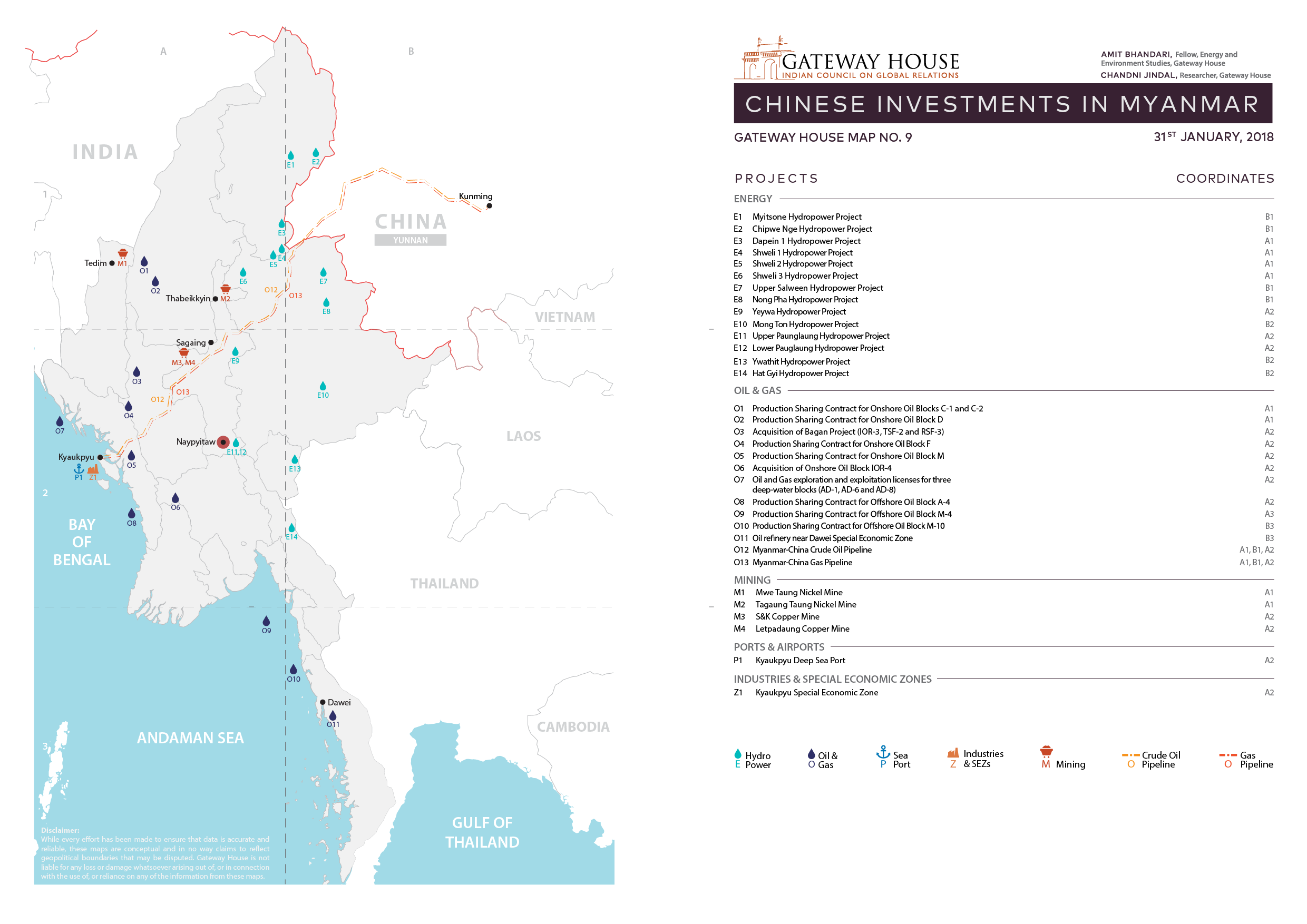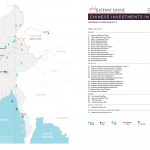
While most Asian countries studied by Gateway House are moving toward greater dependence on China, Myanmar is moving in the opposite direction.
For decades, China has been one of the few countries willing to do business with Myanmar, sanctioned by the West for its military regime and allegations of human rights violations. The result: State-owned Chinese enterprises own and operate a large number of hydropower plants, mines and oil fields in the country, including oil and gas pipelines that deliver energy to China. China is a major market for logs and jade, and plans to develop a major port at Kyaukpyu. More than 40% of Myanmar’s foreign trade is with China.
There are some other irritants in the two countries’ relationship. Myanmar faces multiple insurgencies, some of which have active Chinese support.
Myanmar’s democratic transition is an effort to reduce its overweening dependence on China. This has resulted in at least one high-profile casualty: Myitsone, a multibillion-dollar dam being built by a Chinese state firm to export electricity to China, has been suspended since 2011. Nor did Chinese companies bag any new oil exploration blocks in a 2014 auction.
India cannot play China’s game of pouring big money in multiple projects in the region. But it can build on its strengths. Indian consumer products are popular in Myanmar for their quality and durability; this can be scaled up. And New Delhi can more easily promote and deliver on smaller cross-border connectivity projects.
Geopolitically, India needs to exercise strategic patience, to wait for the inevitable pushback that comes when a foreign power assumes an overwhelming local presence. That means maintaining and developing political and economic ties with all of its neighbours – and not unnecessarily stigmatising a regime in ways that close doors to such a possibility.
This map is part of a larger book on Chinese Investments in India’s Neighbourhood. To see the project description and place an order for the book, please click here.
Amit Bhandari is Fellow, Energy and Environment Studies at Gateway House
Chandni Jindal is Researcher at Gateway House
Visualized and mapped by Debarpan Das
This map was exclusively developed by Gateway House: Indian Council on Global Relations. You can read more exclusive content here.
For interview requests with the author, or for permission to republish, please contact outreach@gatewayhouse.in.
© Copyright 2018 Gateway House: Indian Council on Global Relations. All rights reserved. Any unauthorized copying or reproduction is strictly prohibited.


